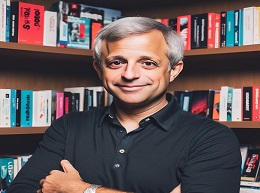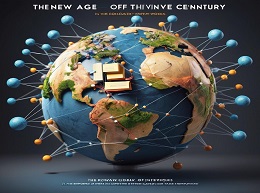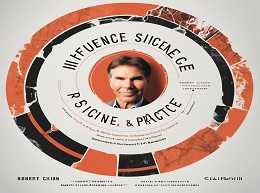Reality Check: The Irreverent Guide to Outsmarting, Outmanaging, and Outmarketing Your Competition

Reality Check: The Irreverent Guide to Outsmarting, Outmanaging, and Outmarketing Your Competition
Guy Kawasaki's "Reality Check: The Irreverent Guide to Outsmarting, Outmanaging, and Outmarketing Your Competition" is an insightful and entertaining guide for entrepreneurs, managers, and marketers. Kawasaki, a former Apple evangelist and renowned author, brings his trademark humor and no-nonsense approach to this comprehensive collection of business wisdom. The book is structured as a series of essays, making it a versatile read for anyone looking to gain practical advice and innovative strategies.
Guy Kawasaki
Guy Kawasaki is a Silicon Valley icon, best known for his role in marketing the Apple Macintosh in the 1980s. He has since become a successful venture capitalist, author, and speaker. Kawasaki's experience spans various industries and roles, making him a credible and engaging voice in the business world.
Practical Wisdom
Kawasaki's primary aim is to provide practical, actionable advice. Unlike many business books that focus on abstract theories, "Reality Check" offers concrete strategies that can be implemented immediately.
Example: The Art of Pitching
One of the standout sections of the book is Kawasaki’s advice on pitching. He breaks down the components of a successful pitch, emphasizing clarity, brevity, and the importance of understanding the audience. Kawasaki’s "10/20/30 Rule" for presentations 10 slides, 20 minutes, 30-point font has become a widely accepted guideline in the industry.
Embracing Reality
Kawasaki encourages readers to embrace reality, no matter how harsh it might be. He argues that understanding and accepting the true state of affairs is crucial for making informed decisions and crafting effective strategies.
Example: Market Research
In the chapter on market research, Kawasaki advises entrepreneurs to seek honest feedback and be prepared for criticism. He underscores the importance of listening to customers and using their input to refine products and services.
Innovation and Creativity
Kawasaki places a strong emphasis on innovation as a key driver of competitive advantage. He suggests that companies must constantly seek new ways to solve problems and meet customer needs.
Example: Apple’s Macintosh
Drawing on his experience at Apple, Kawasaki discusses how the company’s commitment to innovation helped it stand out in the competitive computer market. The Macintosh was revolutionary not just for its technology but also for its user-friendly design, which was a result of Apple's innovative approach.
Thinking Differently
Another critical aspect of outsmarting the competition is thinking differently. Kawasaki argues that businesses should challenge conventional wisdom and explore unconventional ideas.
Example: Canva
As a chief evangelist for Canva, Kawasaki illustrates how the online design platform disrupted the graphic design industry by making design tools accessible to non-designers. Canva’s success lies in its ability to simplify complex processes, making professional-quality design attainable for everyone.
Leadership and Management
Effective management is a recurring theme in "Reality Check." Kawasaki offers insights into leadership, team building, and decision-making, all essential for outmanaging the competition.
Example: Building a Strong Team
Kawasaki stresses the importance of hiring individuals who are not just skilled but also culturally fit for the company. He advises leaders to look for passion and alignment with the company’s mission in potential hires.
Empowering Employees
Kawasaki believes that empowering employees is crucial for fostering innovation and maintaining a competitive edge. He suggests that giving employees the autonomy to make decisions and take risks can lead to greater creativity and productivity.
Example: Google’s 20% Time
He references Google’s policy of allowing employees to spend 20% of their time on projects of their choosing. This approach has led to the development of successful products like Gmail and Google News, demonstrating the benefits of empowering employees.
Crafting a Compelling Message
Kawasaki emphasizes the importance of storytelling in marketing. He argues that a compelling narrative can differentiate a brand and resonate deeply with customers.
Example: Nike’s Just Do It
Nike’s "Just Do It" campaign is a prime example of effective storytelling. Kawasaki explains how the simple yet powerful message has become synonymous with the brand, inspiring customers and creating a strong emotional connection.
Leveraging Social Media
In the digital age, Kawasaki underscores the importance of leveraging social media to reach and engage with customers. He provides practical tips for building an online presence and using social media platforms effectively.
Example: Social Media Strategy
Kawasaki advises companies to be authentic and consistent in their social media efforts. He suggests using social media to tell the brand’s story, interact with customers, and build a community around the brand. His own use of social media to promote his books and ventures serves as a testament to these strategies.
Humor and Honesty
One of the most refreshing aspects of "Reality Check" is Kawasaki’s irreverent style. His use of humor and honesty makes the book an enjoyable read, even as he tackles serious business topics.
Example: The Reality of Entrepreneurship
Kawasaki doesn’t shy away from discussing the harsh realities of entrepreneurship. He humorously describes the challenges and setbacks he’s faced, making his advice relatable and grounded in real-world experience.
Actionable Insights
Each chapter of "Reality Check" is packed with actionable insights that readers can apply to their own businesses. Kawasaki’s advice is practical, straightforward, and often based on his own experiences.
Example: The Art of the Start
In the chapter on starting a business, Kawasaki provides a step-by-step guide for launching a new venture. From identifying a viable market opportunity to securing funding and building a team, his advice is comprehensive and actionable.
Real-World Examples
Kawasaki supports his advice with real-world examples from his own career and the successes of other companies. These examples illustrate his points effectively and provide readers with concrete case studies to learn from.
Example: The Rise of Tesla
He discusses how Tesla, under Elon Musk’s leadership, has managed to disrupt the automotive industry. By focusing on innovation, branding, and a compelling vision, Tesla has outsmarted, outmanaged, and outmarketed its competitors.
"Reality Check: The Irreverent Guide to Outsmarting, Outmanaging, and Outmarketing Your Competition" by Guy Kawasaki is an essential read for anyone looking to gain a competitive edge in the business world. Kawasaki’s blend of practical advice, real-world examples, and irreverent humor makes this book both informative and enjoyable.
Whether you are an aspiring entrepreneur, a seasoned executive, or a marketing professional, "Reality Check" offers valuable insights and strategies to help you navigate the complexities of the business world. By debunking myths, challenging conventional wisdom, and providing actionable advice, Kawasaki empowers readers to think differently, act boldly, and achieve extraordinary success.
In a landscape where competition is fierce and constant innovation is necessary, "Reality Check" serves as a vital resource for outsmarting, outmanaging, and outmarketing your rivals. Kawasaki’s wisdom, drawn from his extensive experience and punctuated with humor, makes this book not only a guide to business success but also an engaging and thought-provoking read.













